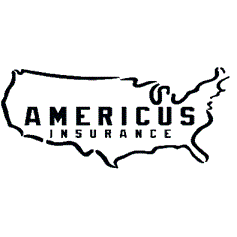
Introduction: Automobile insurance can be confusing when you are not well informed regarding all the different aspects that go into your personal auto insurance policy. This guide will help provide knowledge and definitions, as well as information on how to take action to start saving on your premium costs immediately.
1. Understanding Auto Insurance Basics:
a. Coverage Types:
- Liability Coverage:
- Protects against costs if you injure someone or damage their property in an accident.
- Collision Coverage:
- Covers damage to your car in case of a collision, regardless of fault.
- Comprehensive Coverage:
- Protects against non-collision incidents like theft, vandalism, or natural disasters.
- Personal Injury Protection (PIP):
- Covers medical expenses and lost wages for you and your passengers, regardless of fault.
- Uninsured/Underinsured Motorist Coverage:
- Protects you if you’re in an accident with an uninsured or underinsured driver.
b. Policy Components:
- Deductible:
- The amount you pay out of pocket before your insurance kicks in.
- Premium:
- The cost of your insurance, paid monthly, quarterly, or annually.
- Policy Limits:
- The maximum amount your insurance will pay for covered claims.
2. Factors Influencing Premiums:
- Driving History:
- A clean record often leads to lower premiums.
- Age, Gender, and Marital Status:
- Younger, male, or unmarried drivers may have higher premiums.
- Vehicle Type:
- The make, model, and year of your car can impact premiums.
- Coverage Amounts:
- Higher coverage limits usually result in higher premiums.
- Geographical Location:
- Higher risk geographical factors usually result in higher premiums.
3. Saving Money and Discounts:
- Safe Driver Discounts:
- Rewards for maintaining a good driving record.
- Multi-Policy Discounts:
- Bundling auto insurance with other policies for discounts.
- Safety Features:
- Discounts for having anti-theft devices, airbags, or other safety features.
- Good Student Discounts:
- Available for students with good academic records.
4. State-Specific Considerations:
- Minimum Requirements:
- Auto insurance requirements vary by state, so know and meet your state’s minimum required coverages.
- No-Fault States:
- Some states follow a no-fault insurance system, affecting how claims are handled.
5. Optional Coverages:
- Roadside Assistance:
- Provides services like towing, flat tire assistance, and fuel delivery.
- Rental Car Reimbursement:
- Covers the cost of a rental car while your vehicle is being repaired.
- Gap Insurance:
- Covers the gap between your car’s value and the amount you owe on a loan.
6. Reviewing and Comparing Policies:
- Read the Fine Print:
- Understand exclusions, limitations, and conditions in the policy.
- Compare Quotes:
- Obtain quotes from multiple insurers to find the best rates.
- Review Customer Feedback:
- Check reviews and customer satisfaction ratings.
7. Filing Claims and Managing Coverage:
- Prompt Reporting:
- Report accidents and file claims promptly.
- Claims Process:
- Understand the steps involved in filing and processing claims.
- Review Coverage Periodically:
- Update coverage as needed, especially after life changes or acquiring a new vehicle.
8. Consulting with an Insurance Professional:
- Insurance Agent:
- Seek advice from an insurance agent to help understand the types of coverage and what type of policy meets your needs.
- Ask Questions:
- Clarify any doubts or uncertainties before finalizing a policy.
By understanding these aspects and considering your specific needs, you can make informed decisions when selecting and managing your auto insurance policy. Always stay informed about changes in your life, vehicle, or state regulations that may impact your coverage.
